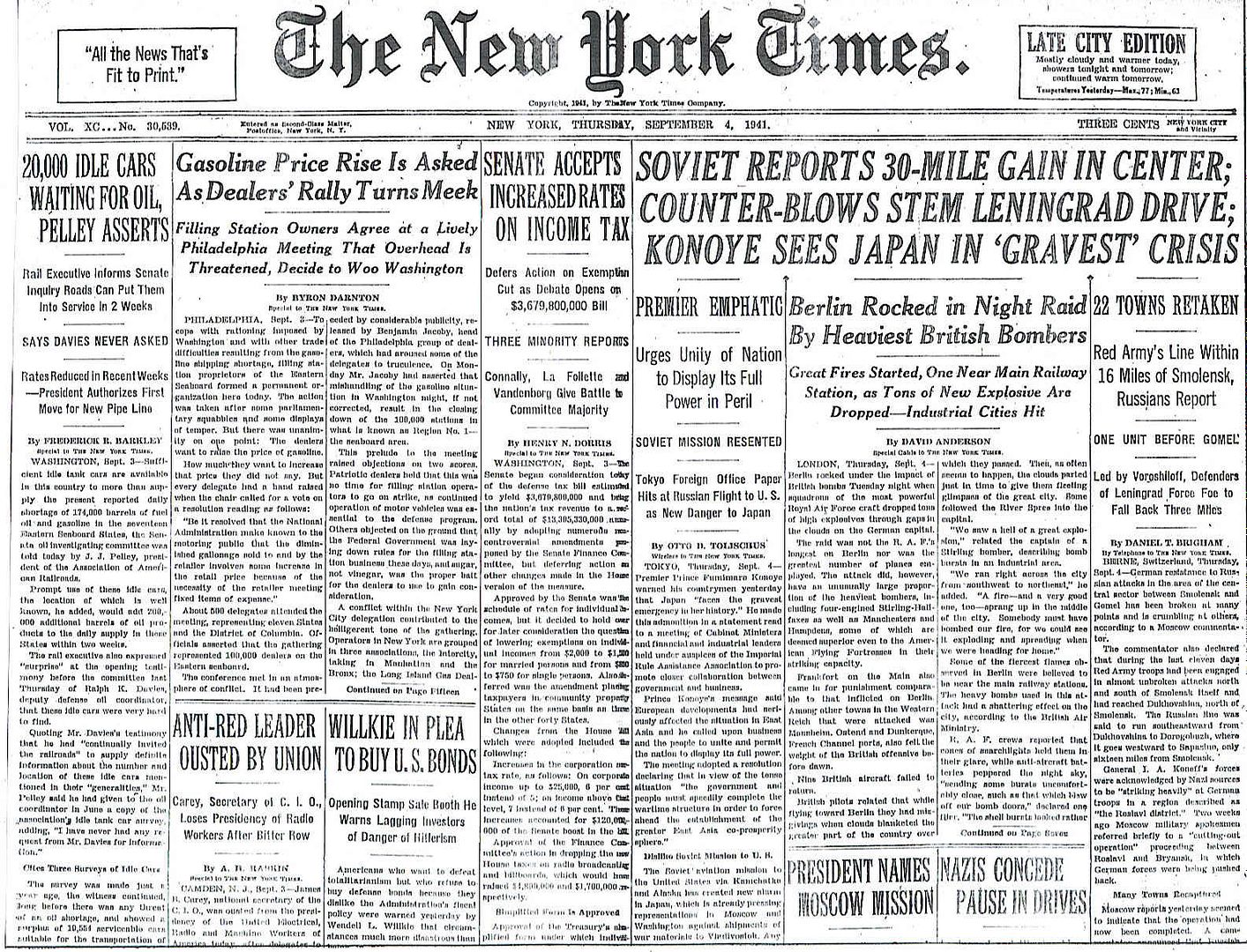
Posted on 09/04/2011 5:22:32 AM PDT by Homer_J_Simpson

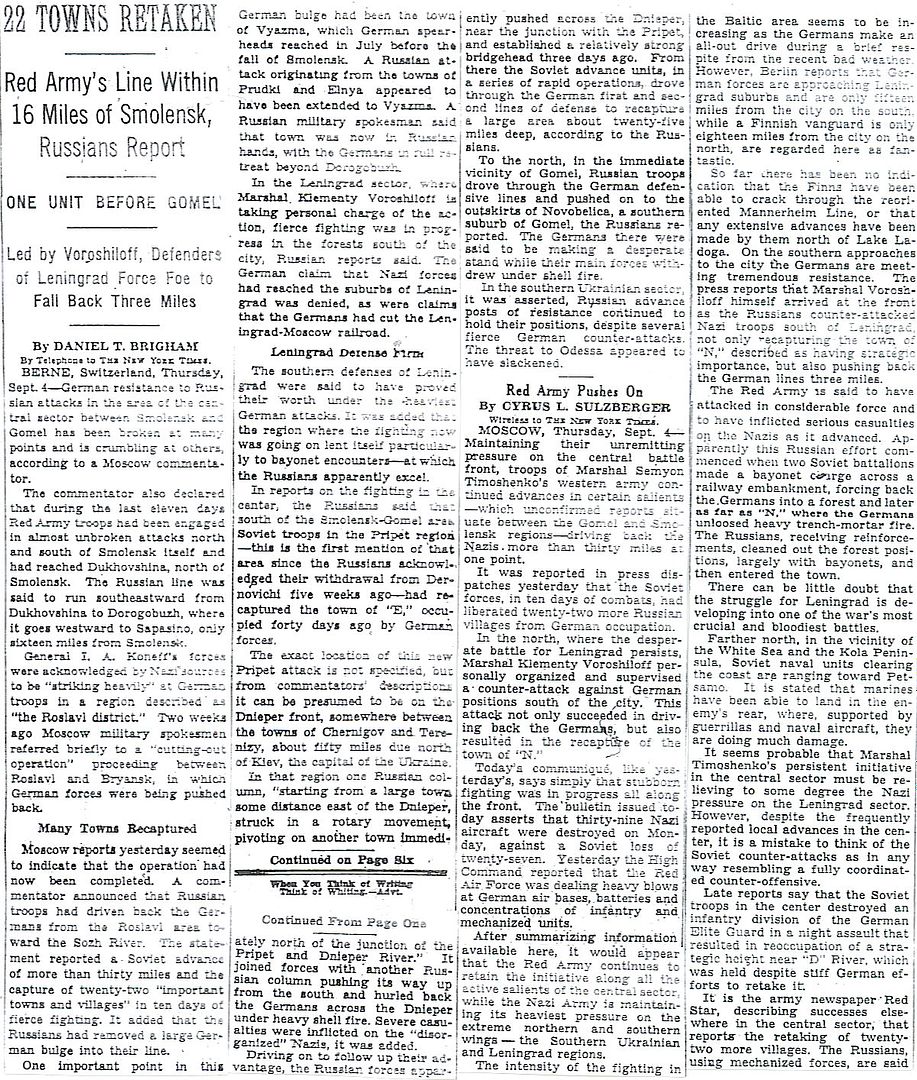
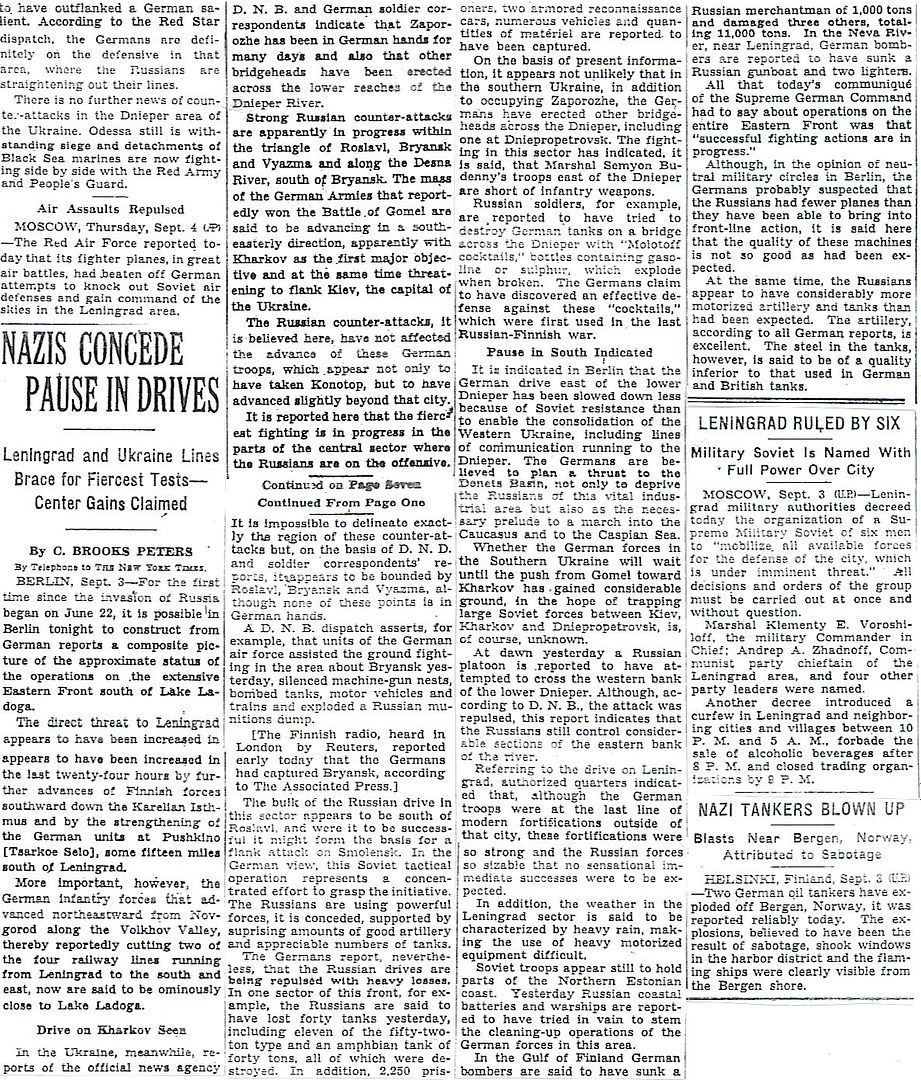
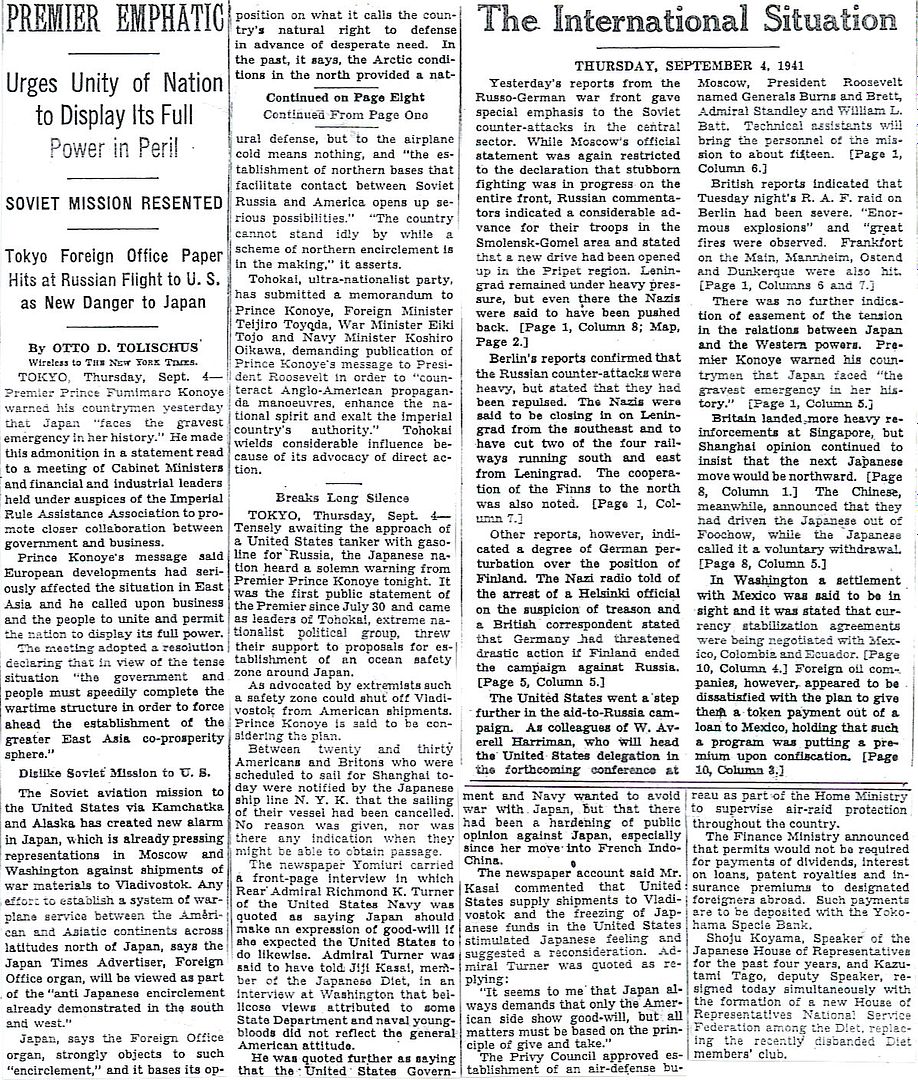
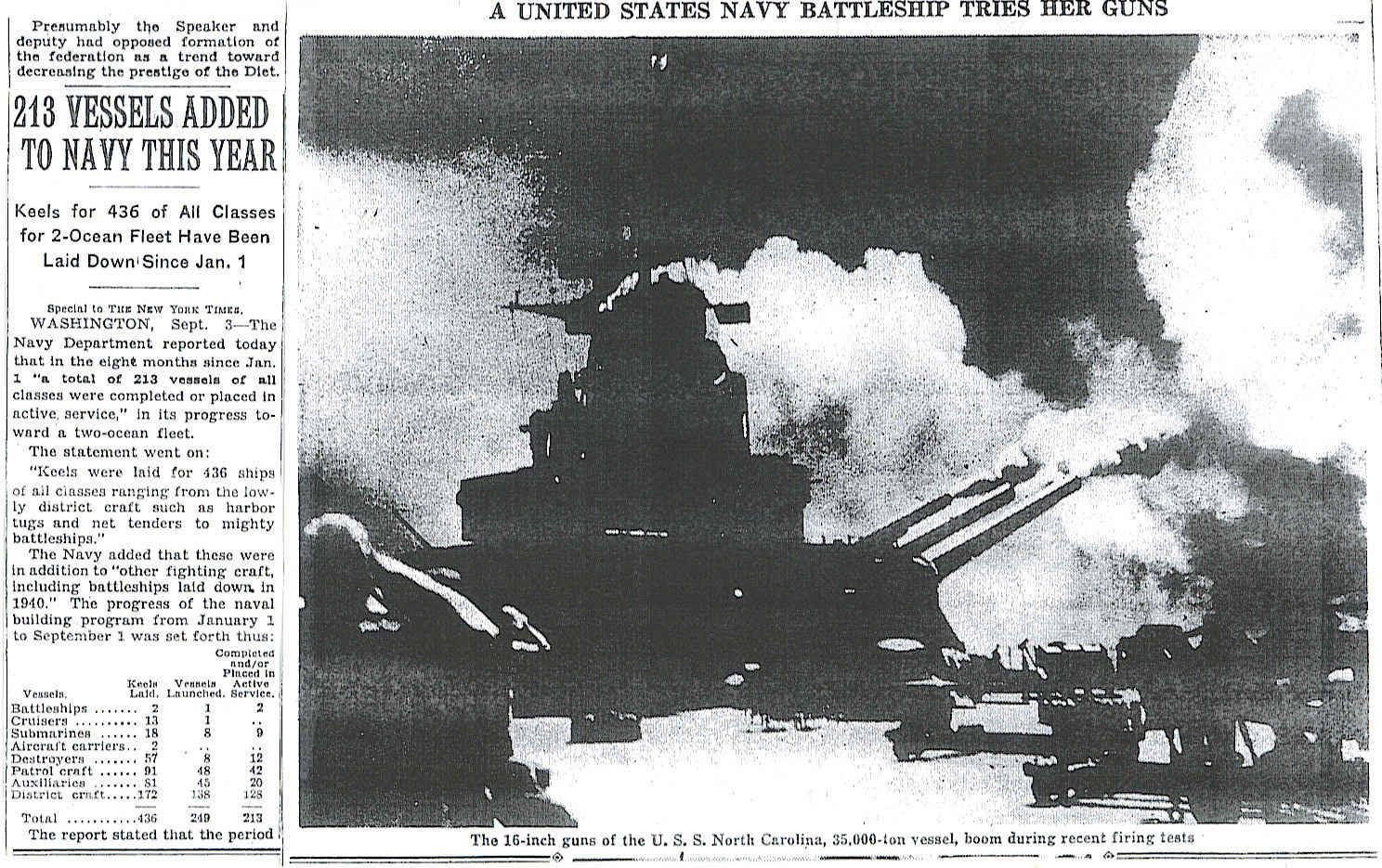
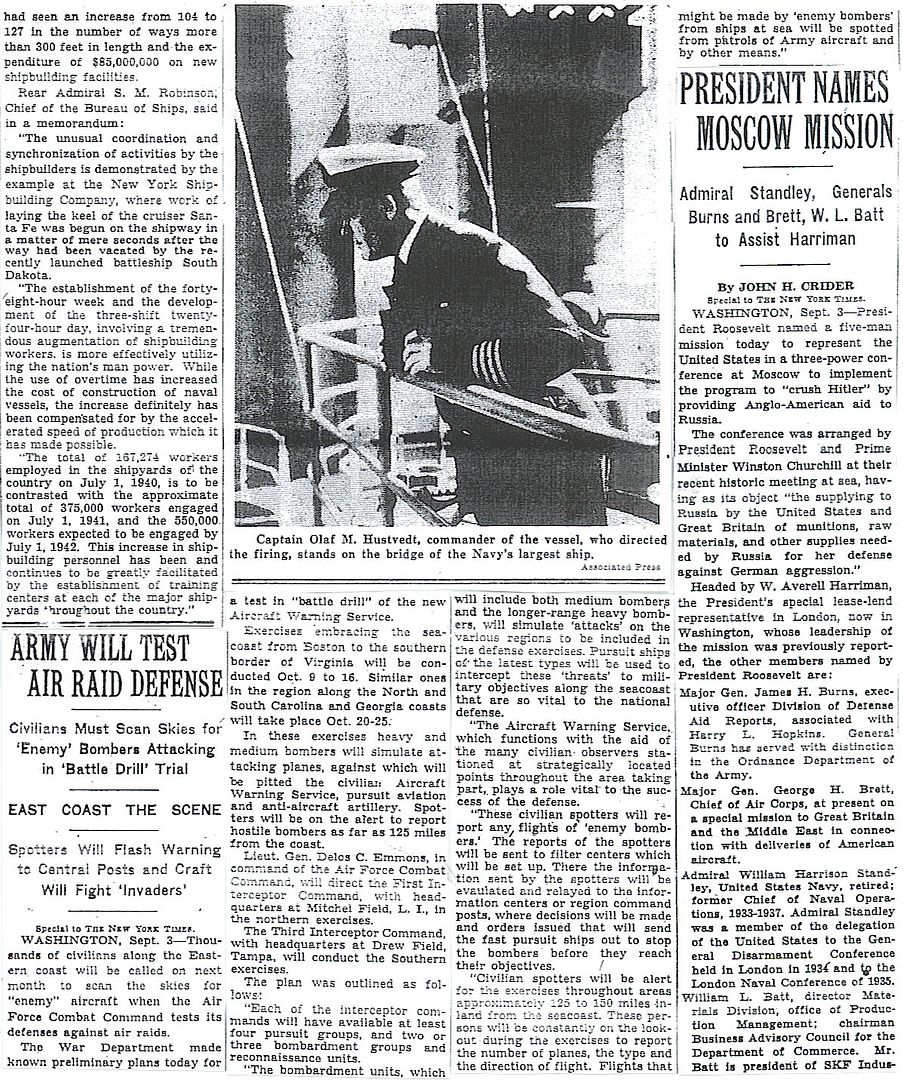

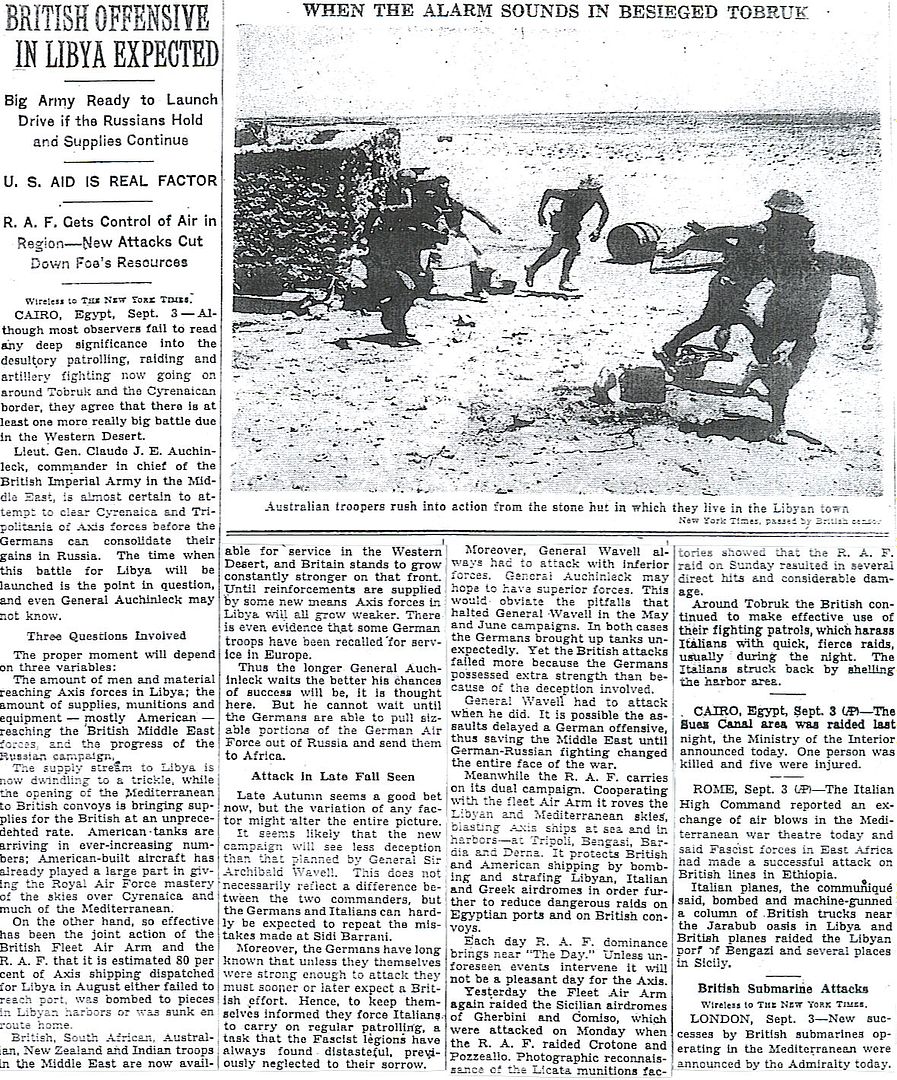
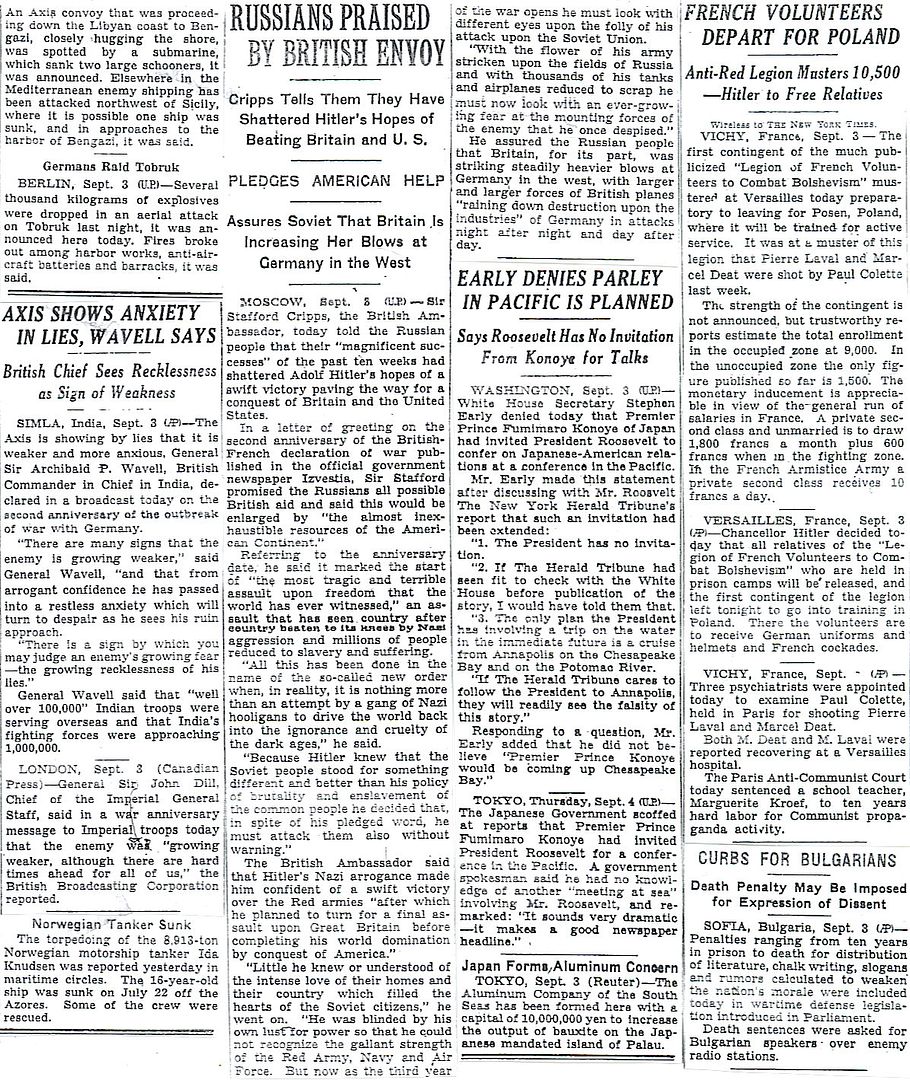
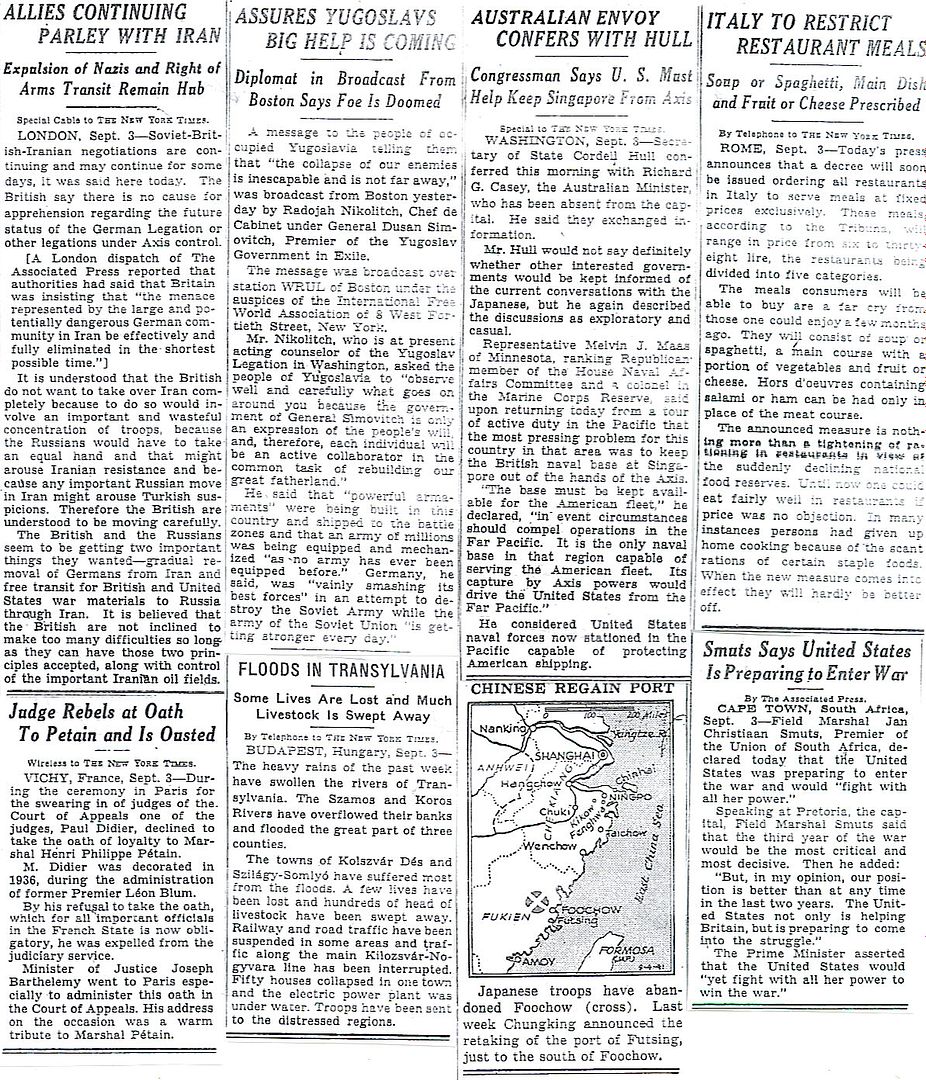
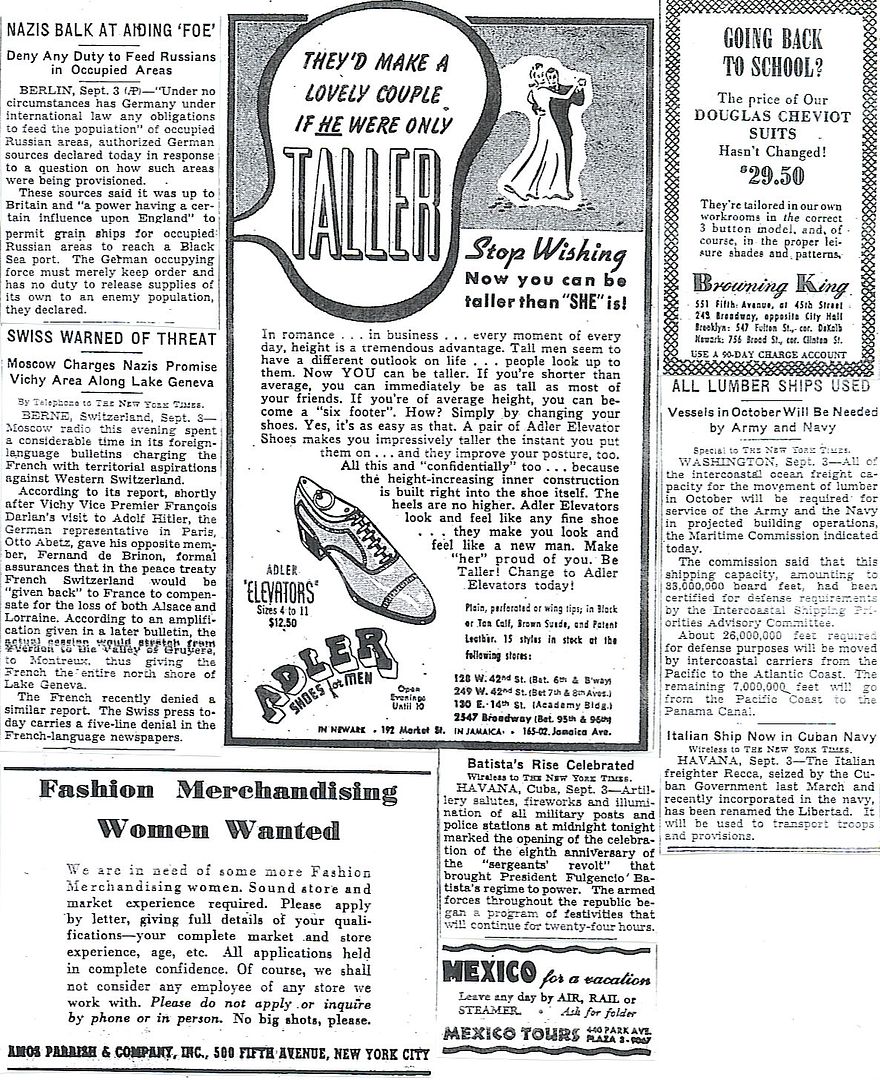
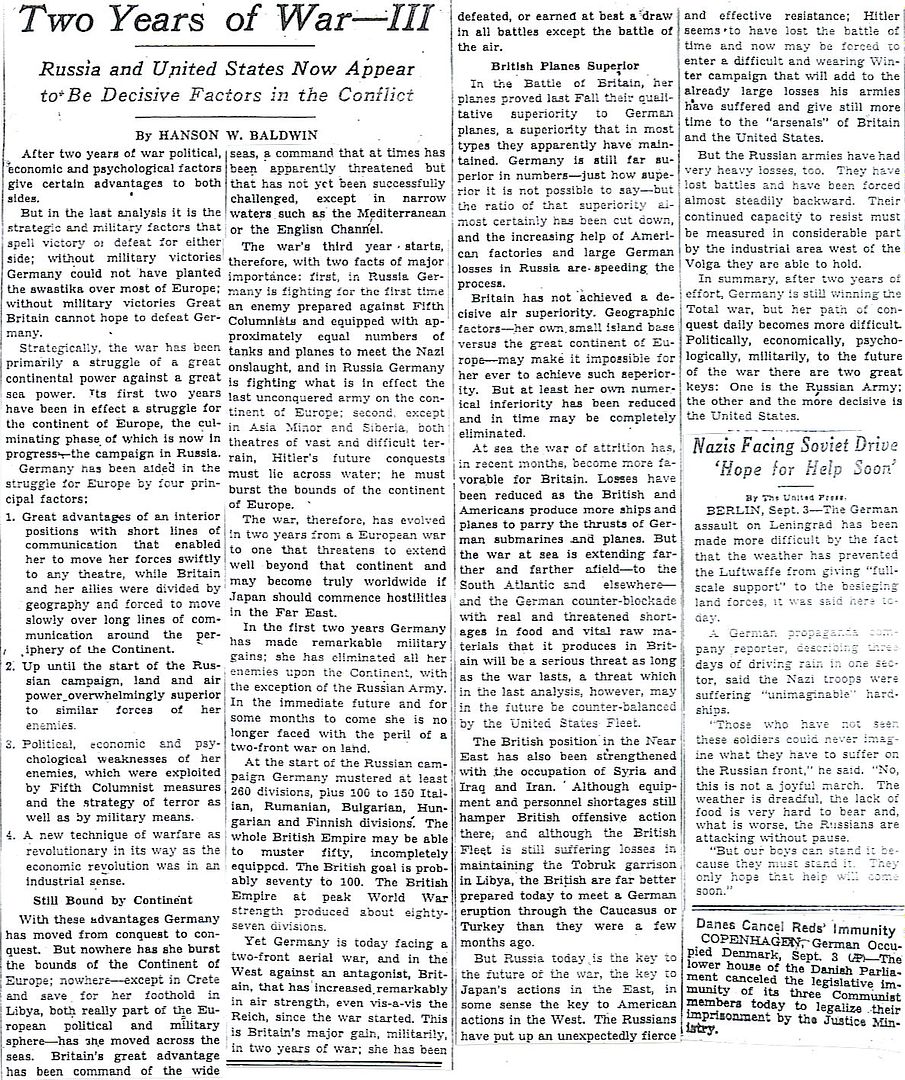
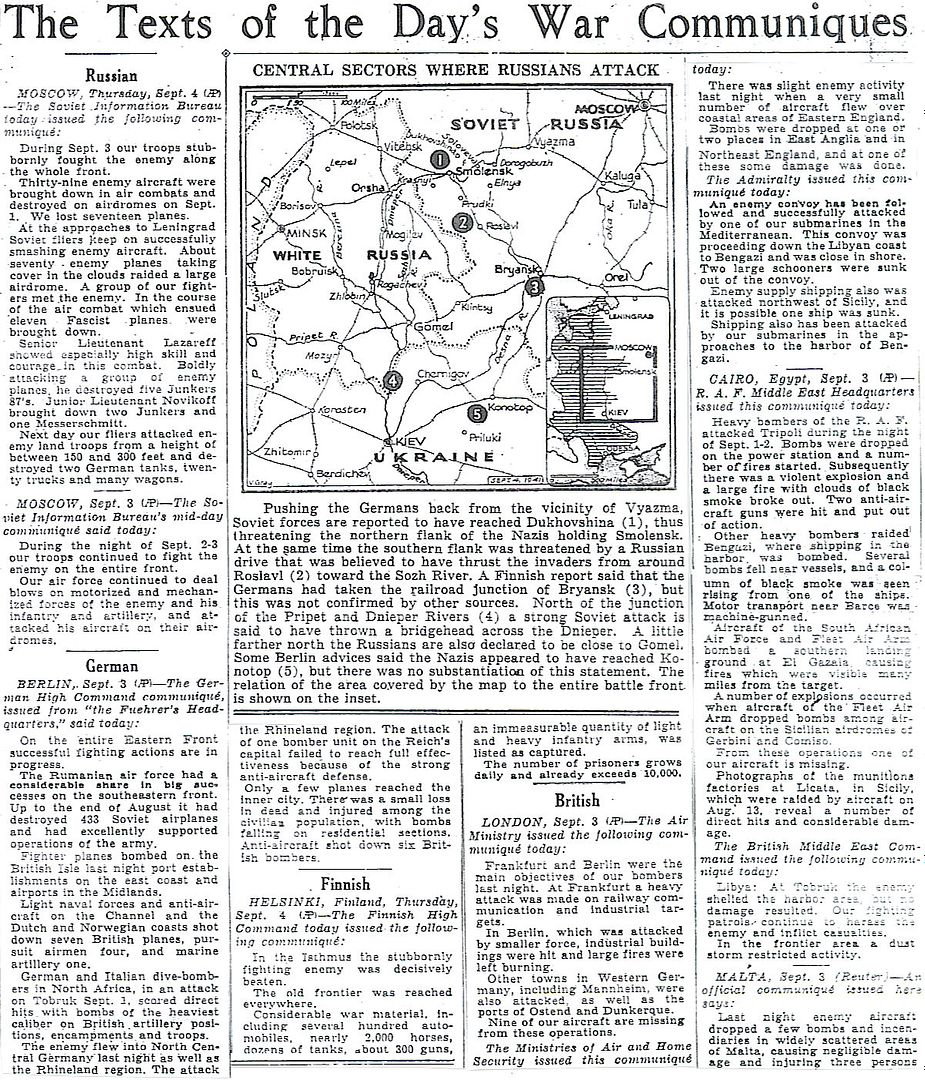
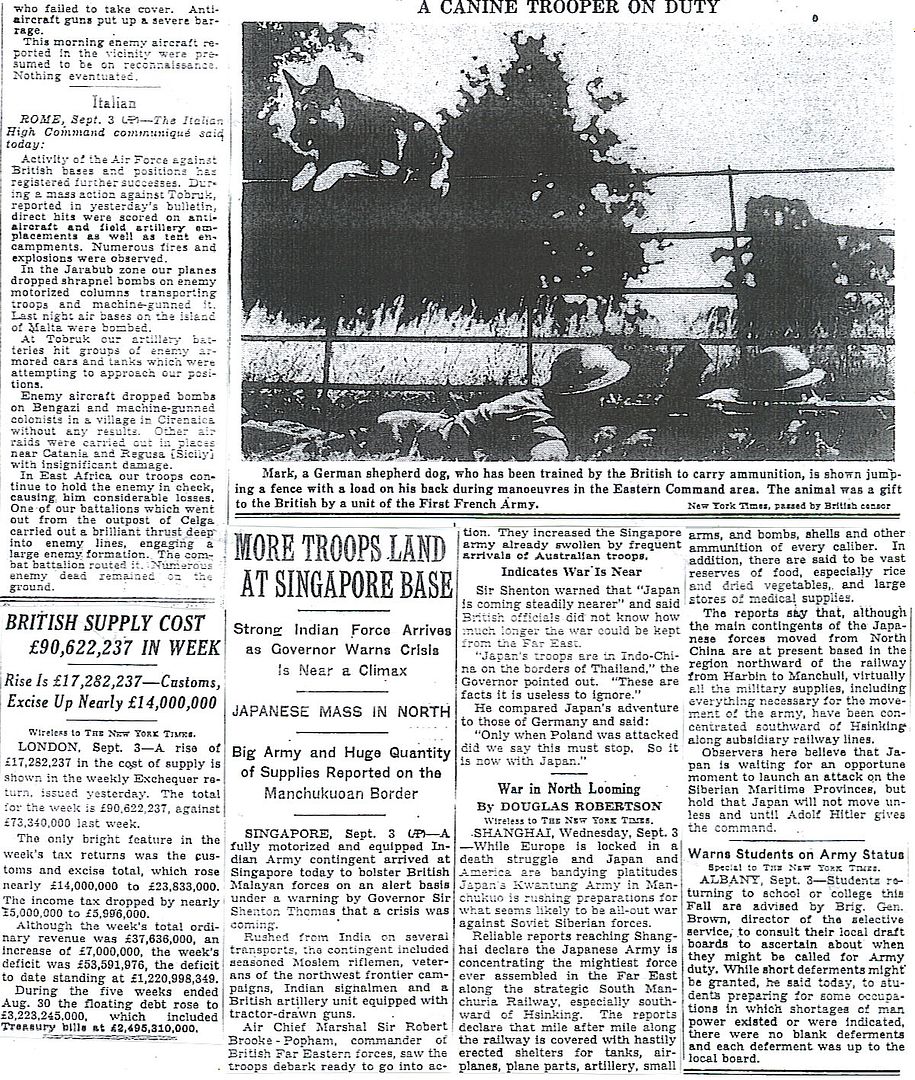
22 Towns Retaken – 2-3
Nazis Concede Pause in Drives – 3
Premier Emphatic – 4-5
The International Situation – 4
213 Vessels Added This Year – 5-6
A United States Navy Battleship Tries Her Guns (photos) – 5-6
Army Will Test Air Raid Defense – 6
President Names Moscow Mission – 6-7
The Day in Washington – 7
British Offensive in Libya Expected – 8-9
When the Alarm Sounds in Besieged Tobruk (photo) – 8
Axis Shows Anxiety in Lies, Wavell Says – 9
Russians Praised by British Envoy – 9
Early Denies Parley in Pacific is Planned – 9
French Volunteers Depart for Poland – 9
Allies Continuing Parley with Iran – 10
Judge Rebels at Oath to Petain and is Ousted – 10
Assures Yugoslavs Big Help is Coming – 10
Australian Envoy Confers with Hull – 10
Chinese Regain Port (map) – 10
Italy to Restrict Restaurant Meals – 10
Smuts Says United States is Preparing to Enter War – 10
Two Years of War-III – 12
Nazis Facing Soviet Drive ‘Hope for Help Soon’ – 12
The Texts of the Day’s War Communiques – 13-14
British Supply Cost £90,622,237 in Week – 14
A Canine Trooper on Duty (photo) – 14
More Troops Land at Singapore Base - 14
http://www.onwar.com/chrono/1941/sep41/f04sep41.htm
German sub sink [sic] American destroyer
Thursday, September 4, 1941 www.onwar.com
In the North Atlantic... the US destroyer Greer, escorting a convoy, is attacked by a German U-boat. It engages and attempts to sink the U-boat with depth charges. US President Roosevelt cites the incident as an example of German aggression against the US.
http://homepage.ntlworld.com/andrew.etherington/month/thismonth/04.htm
September 4th, 1941
UNITED KINGDOM: William Mackenzie King, the Canadian prime minister, warned today that Britain is now the only obstacle in the way of an attack by Hitler’s “enslaving hordes of new barbarians” on the New World. He made an impassioned plea to the US for a declaration of support for Britain similar to that promised by Mr Churchill for the Americans in the Far East. Otherwise, he said, “the war may drag on for years, carrying in its train famine, pestilence and horrors still undreamed of.”
The Canadian leader was speaking at the Mansion House, in the City of London. Mr Churchill endorsed the Canadian call and added: “Time is short and the struggle is dire. To save humanity all free men must stand together.”
Destroyer HMS Matchless is launched. (Dave Shirlaw)
FRANCE: Paris: The first detachment of the Legion des Volontaires Français [Legion of French Volunteers] sets off to join the German army on the eastern front.
GERMANY: Rastenburg: Hitler, infuriated by the slow progress of the German advance, starts looking for a scapegoat.
U-510 is launched. U-268, U-632 and U-712 are laid down. U-156 and U-586 are commissioned. (Dave Shirlaw)
FINLAND: General der Artillerie Alfred Jodl visits Finland. He discusses with the Finnish leadership about the Finnish war effort, particularly the possibility of a Finnish attack towards Leningrad. Mannerheim rejects the idea of a Finnish participation, but agrees to pursue the retreating Russians as far as the first Soviet fortification-line north of Leningrad. Mannerheim informs Jodl about the situation on the Finnish front: Karelian Army has just started its attack towards the River Syväri (Svir). Jodl also hands Mannerheim the Knight’s Cross Hitler had awarded him a couple of days earlier. (Mikko Härmeinen)
U.S.S.R.: Finnish troops capture Belostrov.
ATLANTIC OCEAN: The US destroyer Greer (DD-145) is attacked by a U-boat. Although undamaged President Roosevelt presents this incident as evidence of German aggression.
The “Greer Incident” began at 0840 hours local when USS Greer, carrying mail and passengers to Argentia, Newfoundland, from Reykjavik, Iceland was signalled by an RAF aircraft that a German submarine had crash-dived some 10 miles (16 km) ahead. Forty minutes later the destroyers soundman picked up the U-boat, and Greer began to trail the submarine. The RAF aircraft, running low on fuel, dropped four depth charges at 1032 hours and returned to base, while Greer continued to dog the U-boat. Two hours later the German ship began a series of radical manoeuvres and Greer’s lookouts could see her pass about 100 yards (91 meters) off. An impulse bubble at 1248 hours warned Greer that a torpedo had been fired. Ringing up flank speed, hard left rudder, Greer watched the torpedo pass 100 yards (91 meters) astern and then charged in for attack. She laid a pattern of eight depth charges, and less than 2 minutes later a second torpedo passed 300 yards (274 meters) to port.
Greer lost sound contact during the manoeuvers, and began to quarter the area in search of the U-boat. After 2 hours, she re-established sound contact and laid down a pattern of 11 depth charges before discontinuing the engagement. Greer had held the German raider in sound contact 3 hours and 28 minutes; had evaded two torpedoes fired at her; and with her 19 depth charges had become the first American ship in World War II to attack the Germans. (Jack McKillop)
The Greer was sailing under wartime conditions with all lights blacked out. She is equipped with the latest submarine detectors.
U.S.A.: The government extends Lend-Lease aid to Poland because “. . . the gallant resistance of the forces of the Government of Poland is ‘vital to the defence of the United States.”
In baseball, the New York Yankees beat the Boston Red Sox 6-3 at Fenway Park in Boston to clinch the American League pennant, the earliest date in major league baseball history. This is their third straight pennant victory. The Yankees needed only 136 games to win the pennant, giving them a 91-45 record. (Jack McKillop)
the documents show that the premier of japan is requesting the meeting with Roosevelt, which was rebuffed by hull, because the Japanese cabinet is in stalemate. the navy realizes it cant possibly win a war with the US, but wont say that in cabinet, the civilians on the cabinet also think they cant win, but with the navy silent, no way can be found to control the army in china which is the central contentious issue with the US.
the imperial army cant find a way to withdraw, on its own, because of what they view as their “debt to the dead”. this may sound ridiculous to us, but i guess it was very real. having lost over 200,000 troops in China, they couldn't internally find a way to withdraw.
the only power in the country that could effect a withdrawal was the emperor.
the premier's strategy in wanting to meet with Roosevelt was to get him to give the premier a concession that IF the army withdrew from china, the embargo would be lifted. his plan was, armed with that concession, to go direct to the emperor and have the emperor intervene and order the army withdrawal which would save face for all.
alas, this two corner diplomatic bank shot was not to be, and the cabinet got sucked into a position where it was easier to save face in the short run, even though many of them believed they would be doomed in the long run.
also, at a crucial moment, a flawed analysis was presented which showed that japan had sufficient naval assets to supply itself via sea, in wartime, from SE Asia. when this turned out, during the war, not to be true, the Japanese nation was doomed, and the outcome a fore gone conclusion.
A very significant submarine.
The 20,000 ton British Cunard Star Liner "Laconia" had been converted into a troopship, armed with deck guns, depth charges and asdic equipment. This made her a legitimate military target. U-156 attacked and sank this target.
As it turned out, she was carrying 2,732 passengers; 136 crew, 285 British soldiers, 80 civilians including women and children, 160 Polish guards and 1,800 Italian prisoners of war.
Realizing his error, Hartenstein immediately launches a rescue operation. Hundreds of survivors were picked up, including civilian women and children, with many crammed inside the submarine, on the upper deck and a further 200 survivors in tow aboard four lifeboats. He also called for assistance from nearby U-boats and broadcasted a radio message in plain English, providing his position and requesting aid from any nearby vessels, promising a suspension of hostilities while rescue operations were underway. U-156 remained on the surface for two and a half days providing aid to the beleaguered survivors.
Donitz was startled by Hartenstein’s actions. Although he ordered for no such rescues to take place, this time he not only allowed it, but supported it. Donitz would explain many years later, “to give them an order contrary to the laws of humanity would have destroyed it (the crews morale) utterly”.
Four submarines shepherded the survivors, with lifeboats in tow and hundreds standing on the decks of the U-boat, they made towards the African coastline for a rendezvous with Vichy French warships dispatched as part of the rescue.
September 16, at 11.25am, this concentration of U-boats was spotted by an American B-24 Liberator bomber operating out of Ascension island. The survivors waved and the U-boats signaled for help. As Red Cross flags were draped over their decks, the pilot Lieutenant James D. Harden turned away and radioed back to base for instructions. The officer on duty that day Captain Robert C. Richardson III replied with the order to attack
They were attacked with a concentration of bombs and depth charges. One bomb landed amidst a lifeboat and hundreds perished during that attack. U-156 was slightly damaged and forced to submerge, leaving hundreds of victims struggling in the water.
In total, there were about 1,621 deaths with 1,111 survivors, including those already taken aboard the overcrowded U-boats.
As a result of this incident, Admiral Donitz issued an order forbidding U-boats from attempting any rescues and furthermore, from providing any assistance whatsoever to survivors of submarine attacks. He was quoted to say “no attempt of any kind must be made to rescue the crews of ships sunk”. This order became to be known as the “Laconia Order”.
After the war, Donitz stood trial for war crimes and the Laconia order was used as a basis of indictment against him.
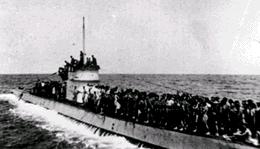
Sunk in 1943 by USN aircraft.
Even after all these years it’s a bit unsettling, although not surprising, to watch some of these Times columnists cheerleading for the Soviets. There seems to be a tendency for some of these writers to blindly accept Moscow’s press releases which at times are so far off the mark as to be almost ludicrous. While I probably can’t blame them since news is rather scarce about the eastern front, I’ve found that the German communiques were far more truthful.
I believe there were some American sub commanders who spoke up for Donitz at Nuremberg because essentially our submarines were ordered to act exactly the same way during the war.
It doesn't sound ridiculous to me. Japan had invested so much blood and treasure in the "China Incident" that I imagine even the emporer would have been reluctant to withdraw to cut losses and appease the U.S. Plus, I'm not sure Roosevelt was all that interested in getting the Japanese to "stand down."
This is an interesting shift in policy for him personally since back in 1920 when he was still a Captain he criticized the Germans for unrestricted submarine warfare in World War I while giving a lecture at the Naval War College:
"I shall pass over the inhumane features of German submarine warfare because their ways were characteristic of the race...Any nation that attempts commerce destruction by submarines will tend toward certain of the same practices that the Germans arrived at; how far it will go depends on its racial characteristics and, very likely, by how hard it is pressed."
And yet by 8 December 1941 his opinion had changed and at 0345 Manila time he gave the order for that very policy he used to argue against.
A good book for those interested in this is "Execute Against Japan" The U.S. Decision to Conduct Unrestricted Submarine Warfare by Joel Ira Holwitt
GERMAN SHEPHERD PING LIST
This is a low-volume list………so don’t worry!
(Please Freep-mail me if you’d like to be on or off the list.)
"Jewish Resistance members based in Dubossary, Ukraine, and led by Yakov Guzanyatskii assassinate a German commander named Kraft. Another group blows up a large store of German arms."
"As part of their campaign to build support for antisemitic measures, the Nazis opened an exposition in Paris entitled Le Juif et la France (The Jew and France)."
So why not start with some of the more controversial stuff, and charge deep, deep into the weeds... ;-)
The following is from Stinnett:
"Admiral Yamamoto’s war plans called for seizure of the American, British, and Dutch possessions in Southeast Asia.
"Japan wanted access to the vast natural resources of this huge area.
Her planned conquest extended along 100° east longitude from Siam (Thailand), south along the Malay Peninsula to the Netherlands East Indies, then branched eastward to the mid-Pacific Ocean near longitude 180°, the international date line.
To implement this immense campaign, Yamamoto organized his Combined Fleet into eight separate commands.
"American radio intelligence obtained the details and Rochefort at Station HYPO informed Admiral Kimmel of the reorganization on September 4.
"Four of the fleet commands were assigned to support the southern offensive—the invasion of Southeast Asia by Japan’s army.
These fleets were the major firepower of Japan’s 1941 navy, but did not include the six major aircraft carriers of the First Air Fleet.
"Cryptographers at Station CAST on Corregidor were able to break down the composition and targets of the main forces.
Traffic analyst Duane Whitlock of CAST prepared a Japanese Order of Battle, which apparently was later forwarded to Kimmel and to Washington at the end of October:
"With these fleets, Admiral Yamamoto planned to block American interference with Japan’s Southeast Asia conquest.
He was sure that the United States would react to the invasion of the Philippines by dispatching warships, air units, and military reinforcement to the British and Dutch governments.
Part of his plan included invading and seizing Guam and Wake islands, two minor and lightly defended American bases in the Central Pacific.
"He organized four fleets to counter the American threat and formed a screening force to immobilize the Pacific Fleet through a surprise attack on Pearl Harbor.
"This screening force consisted of:
"Japan’s Fast Carrier Force was concentrated in the First Air Fleet, which had been formed on April 1.
This force and 30 submarines of the Sixth Fleet would be aimed at Pearl Harbor on December 7.
Japan’s Fourth Fleet, based at Truk, was assigned to capture Guam and Wake and prevent an American military advance through the Central Pacific.
By organizing these fleets into combat-ready forces using the radio waves, Japanese officials unwittingly disclosed their intentions to Americans, Dutch, and British.
These disclosures occurred throughout 1941.
Most Japanese and American historians assert that Japan’s naval vessels ceased radio broadcasts after November 25 pursuant to an order issued by Admiral Yamamoto.
"These assertions have been accepted as fact for fifty years.
But Yamamoto’s order of the twenty-fifth was not all-inclusive—it contained a proviso that permitted radio transmissions.
"The order was intercepted at Station H by Radioman Second Class Jack Kaye at 8:48 P.M., on November 24.
It read, according to a USN translation dated March 18, 1946:
'FROM 26 NOVEMBER, SHIPS OF COMBINED FLEET WILL OBSERVE RADIOCOMMUNICATION PROCEDURES AS FOLLOWS.
"Radio intercepts obtained by US Navy monitoring stations disclosed that the broadcasts continued after the order was issued.
Instead of radio silence there was substantial, continuous radio traffic from the Japanese naval ministry, foreign ministry, and warships, most of which American communications communications intelligence personnel intercepted and understood.
It was a major departure from normal Japanese naval communications. "
Stinnett, Robert (1999). Day of Deceit, Free Press.
And that is exactly the argument the Japanese Army used to convince their emperor to make final approval of the attack on Pearl Harbor.
As for President Roosevelt, I've seen no evidence that he was seriously interested in making peace with Japan -- interested enough to offer the Japanese something they wanted (i.e., non-aggression treaty) in exchange for peace.
Indeed, by early September of 1941, Roosevelt had publicly all but declared all-out war on Nazi Germany, and only needed a significant attack on America to convince Congress the time had come to do its constitutional duty.
So, maybe the Japanese could be pushed into making a major "mistake", just as Commander McCollum had advised back in October, 1940.
By the way, whenever you see the names McCollum, Rochefort, Layton or Watts, remember they are the "gang of four", long-time close buddies who worked together to pull this whole caper off.
personally i don't think so, i cant imagine how anyone could calculate that fighting on two fronts beat fighting on one front against the Germans. anyone got any real evidence one way or the other?
BTW, i think i am right in saying that around September 1941 the Germans had reached the high water mark of their military campaigns. Russians fighting them to a standstill in front of Moscow, and would roll them back following year, Rommel starting on the retreat in Africa. us supply kicking in everywhere for the allies.
the really dumb part of the Japanese strategy: they came in at the peak and it was downhill from there.
Disclaimer: Opinions posted on Free Republic are those of the individual posters and do not necessarily represent the opinion of Free Republic or its management. All materials posted herein are protected by copyright law and the exemption for fair use of copyrighted works.